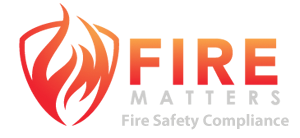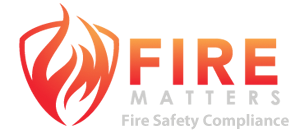Fire-Safety Systems: Are They Being Overlooked in Your Building?
Comfort vs Safety
Fire safety in multi-occupancy dwellings is a responsibility that body corporates and strata managers cannot afford to neglect. While comforts like air conditioning and elevators often get immediate attention when they fail, life safety systems such as fire alarms, evacuation plans, and fire doors are frequently overlooked. This complacency can have dire consequences.
Residents typically assume that the fire safety systems in their buildings are maintained and fully operational, but this is too often not the case. Residential buildings account for the majority of fire incidents and fatalities, yet most occupants are unaware of the fire safety installations in their buildings or the emergency procedures. Research shows that in emergencies, people perform best when they have practiced or planned beforehand—just as emergency services routinely train for such scenarios.
Having fire safety systems independently reviewed by a qualified auditor annually adds an extra layer of protection for body corporates, who ultimately bear the responsibility. If a fire safety system fails to function or residents are untrained in evacuation procedures, liability falls on the body corporate—not the building manager.
Top Compliance Failures in Multi-Occupancy Dwellings
Expired or Incomplete Fire Safety Equipment Certifications
Fire safety equipment like extinguishers, alarms, and sprinklers must be regularly inspected and certified to ensure they function as designed. Missing certifications are one of the most common reasons for audit failures and can lead to catastrophic consequences if the equipment fails during an emergency.
.
Expired or Incomplete Fire Safety Equipment Certifications
Fire safety equipment like extinguishers, alarms, and sprinklers must be regularly inspected and certified to ensure they function as designed. Missing certifications are one of the most common reasons for audit failures and can lead to catastrophic consequences if the equipment fails during an emergency.
.
Improper or Missing Fire Evacuation Diagrams
Evacuation diagrams must meet specific standards and be prominently displayed. Outdated or unclear diagrams confuse residents during emergencies, leading to delays or unsafe evacuation attempts.
.
Uninspected Fire Doors
Fire doors are critical for containing fire and smoke, yet they are often neglected. Damaged or improperly installed fire doors fail to serve their purpose, endangering lives and violating compliance standards.
.
Inadequate Record Keeping
Incomplete or disorganised documentation of fire safety inspections and maintenance can lead to audit failures and increased liability for body corporates.
.
Engage an Independent Auditor Annually
Hire a qualified third-party auditor to conduct a comprehensive annual review of all fire safety measures. Independent reviews provide an unbiased evaluation, ensuring that all systems are compliant and functional.
.
How to Address These Compliance Failures
Engage an Independent Auditor Annually
Hire a qualified third-party auditor to conduct a comprehensive annual review of all fire safety measures. Independent reviews provide an unbiased evaluation, ensuring that all systems are compliant and functional.
.
Schedule Regular Inspections
Ensure fire safety equipment and systems are inspected on time by licensed professionals. These inspections address potential issues before they escalate.
.
Practice Emergency Procedures
Conduct regular fire drills to familiarize residents with evacuation routes and procedures. This significantly improves readiness in real emergencies.
.
Maintain Clear Documentation
Use digital tools to organize and store all records related to inspections, certifications, and emergency planning for easy reference during audits.
.

